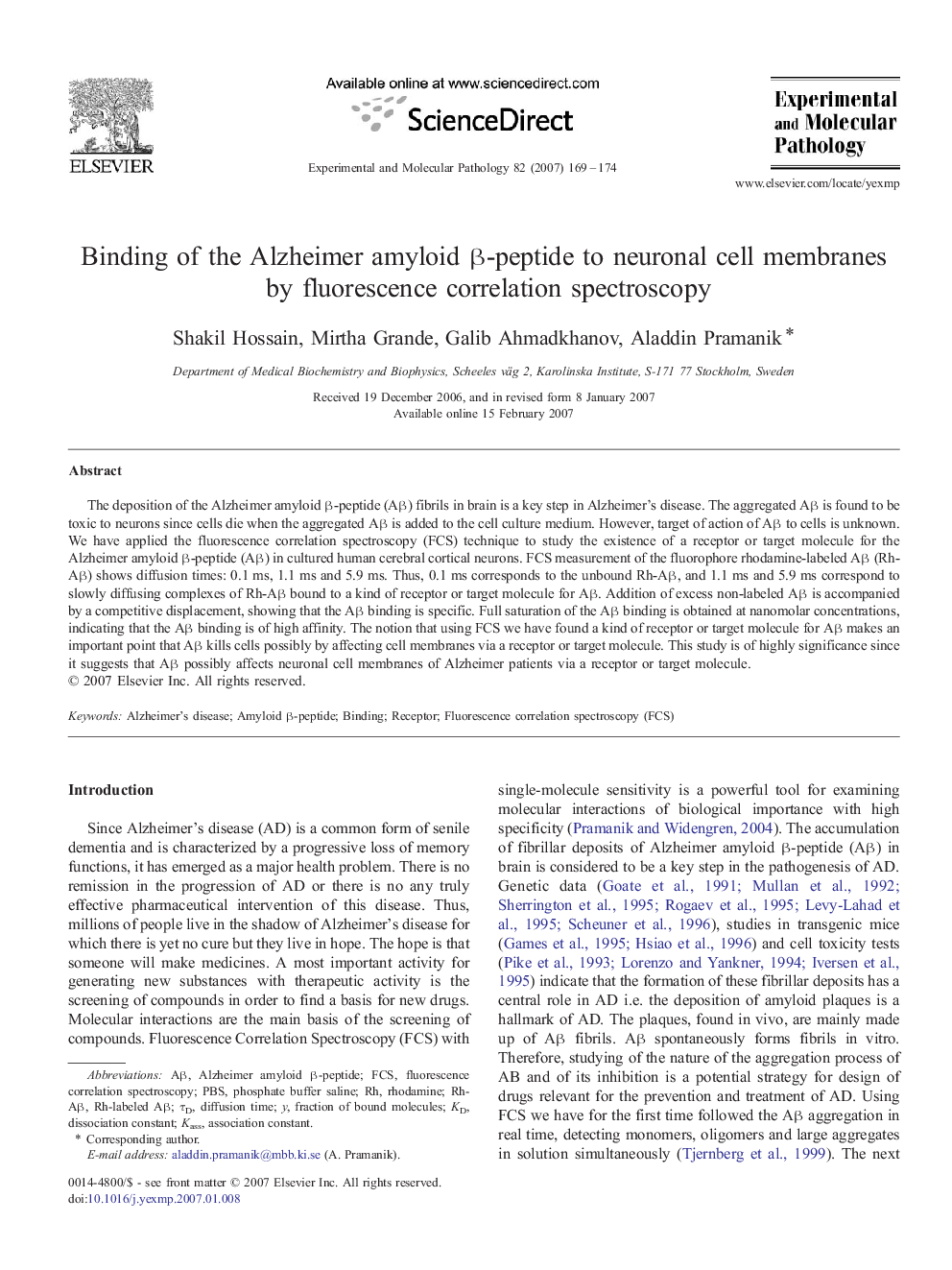| کد مقاله | کد نشریه | سال انتشار | مقاله انگلیسی | نسخه تمام متن |
|---|---|---|---|---|
| 2775963 | 1152354 | 2007 | 6 صفحه PDF | دانلود رایگان |

The deposition of the Alzheimer amyloid β-peptide (Aβ) fibrils in brain is a key step in Alzheimer's disease. The aggregated Aβ is found to be toxic to neurons since cells die when the aggregated Aβ is added to the cell culture medium. However, target of action of Aβ to cells is unknown. We have applied the fluorescence correlation spectroscopy (FCS) technique to study the existence of a receptor or target molecule for the Alzheimer amyloid β-peptide (Aβ) in cultured human cerebral cortical neurons. FCS measurement of the fluorophore rhodamine-labeled Aβ (Rh-Aβ) shows diffusion times: 0.1 ms, 1.1 ms and 5.9 ms. Thus, 0.1 ms corresponds to the unbound Rh-Aβ, and 1.1 ms and 5.9 ms correspond to slowly diffusing complexes of Rh-Aβ bound to a kind of receptor or target molecule for Aβ. Addition of excess non-labeled Aβ is accompanied by a competitive displacement, showing that the Aβ binding is specific. Full saturation of the Aβ binding is obtained at nanomolar concentrations, indicating that the Aβ binding is of high affinity. The notion that using FCS we have found a kind of receptor or target molecule for Aβ makes an important point that Aβ kills cells possibly by affecting cell membranes via a receptor or target molecule. This study is of highly significance since it suggests that Aβ possibly affects neuronal cell membranes of Alzheimer patients via a receptor or target molecule.
Journal: Experimental and Molecular Pathology - Volume 82, Issue 2, April 2007, Pages 169–174